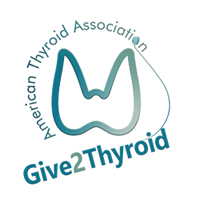ABBREVIATIONS & DEFINITIONS
 Papillary thyroid cancer: the most common type of thyroid cancer. There are 4 variants of papillary thyroid cancer: classic, follicular, tall-cell and noninvasive follicular thyroid neoplasm with papillary-like nuclear features (NIFTP).
Papillary thyroid cancer: the most common type of thyroid cancer. There are 4 variants of papillary thyroid cancer: classic, follicular, tall-cell and noninvasive follicular thyroid neoplasm with papillary-like nuclear features (NIFTP).
Cancer recurrence: this occurs when the cancer comes back after an initial treatment that was successful in destroying all detectable cancer at some point.
Cancer metastasis: spread of the cancer from the initial organ where it developed to other organs, such as the lungs and bone.
Lymph node: bean-shaped organ that plays a role in removing what the body considers harmful, such as infections and cancer cells.
Thyroidectomy: surgery to remove the entire thyroid gland. When the entire thyroid is removed it is termed a total thyroidectomy. When less is removed, such as in removal of a lobe, it is termed a partial thyroidectomy.
Ionizing radiation: radiation that can damage cells, causing cell death or mutation. It can originate from radioactive materials, x-ray tubes or specialized machines. It is invisible and not directly detectable by human senses.
Radioactive iodine (RAI): this plays a valuable role in diagnosing and treating thyroid problems since it is taken up only by the thyroid gland. I-131 is the destructive form used to destroy thyroid tissue in the treatment of thyroid cancer and with an overactive thyroid. I-123 is the non-destructive form that does not damage the thyroid and is used in scans to take pictures of the thyroid (Thyroid Scan) or to take pictures of the whole body to look for thyroid cancer (Whole Body Scan).




